Learn how to make whipped cream from scratch. You can use homemade whipped cream to decorate cakes and cupcakes, make cheesecakes and pies, and to serve alongside classic desserts.
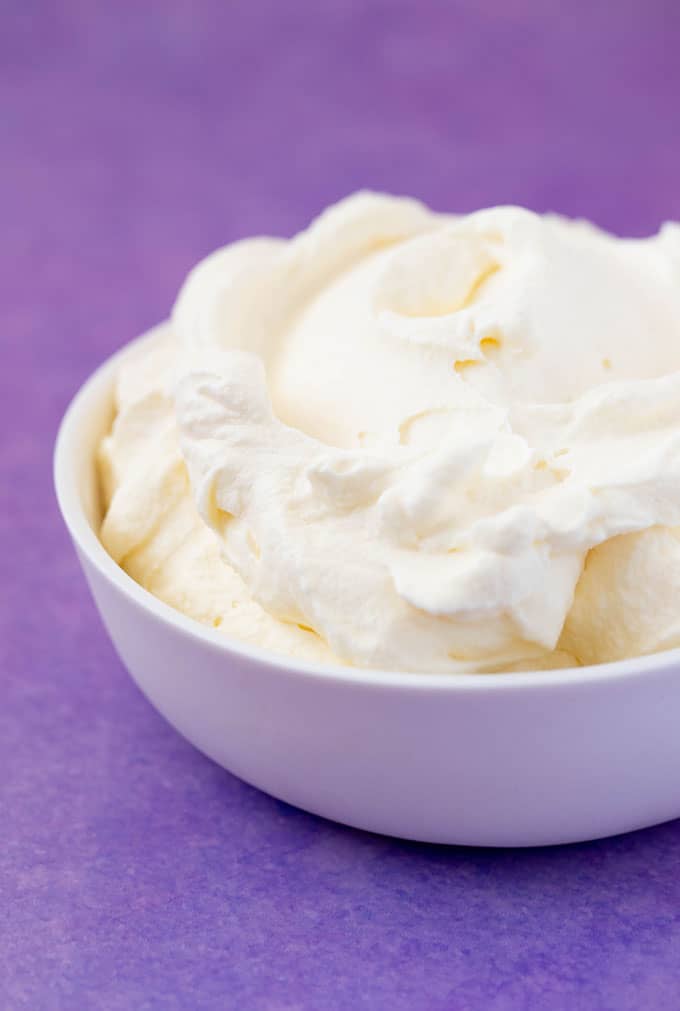
Welcome back to our baking tips series. Today’s topic: Perfect whipped cream 💜
Making homemade whipped cream is surprisingly easy. And it tastes SO much better than the store bought kind.
Once you learn how to make it, you’ll want to put it on everything.
How to make whipped cream
Making homemade whipped cream is easy. You can use an electric mixer or a hand whisk – or a combination of both.
- Start by placing your cream in a large mixing bowl. Use an electric mixer fitted with a whisk attachment (or you can use a hand whisk) and start mixing on a low speed.
- Turn the mixer up to a medium speed. Continue to mix and watch closely as the cream changes texture. Instead of going by time, look for visual clues. Your cream will slowly thicken and become smooth, creamy, and cloud-like.
- Once your cream has reached soft peaks, you can stop there or continue to whip your cream to stiff peaks. It won’t take long, but you’ll see the cream quickly change again and turn very thick and stiff. When that happens, stop immediately or you’ll over whip your cream.
- For a lovely flavour, stir through a teaspoon or two of vanilla extract or vanilla bean paste once your cream has reached soft peaks.
What cream do I use?
The type of cream you use is VERY important. Not all cream is designed to be whipped. And different types of cream are called different names in different countries.
Here in Australia, whipping cream is called thickened cream. What you’ll need to look for is a cream that is at least 35% fat and it should say on the product that it is suitable for whipping. Do not use light or low fat cream.
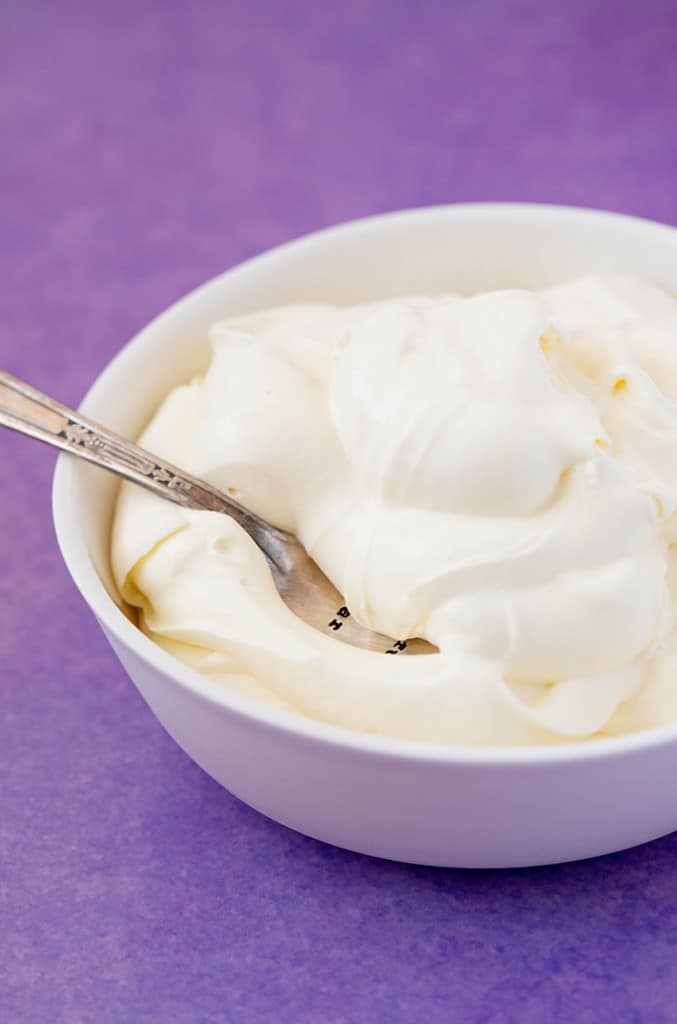
What are Soft peaks?
As you whip your cream, you’ll see it noticeably thicken, this is commonly referred to as soft peaks. This is when your cream becomes voluminous and ‘cloud-like’. Your mixture will be soft and creamy – but not yet thick enough to hold its shape. You can stop here and use softly whipped cream in a variety of desserts.
Use softly whipped cream to:
- Serve alongside Chocolate Brownies
- Use to make Eton Mess
- Dollop over hot Apple Crumble
- Fill Butterfly Cupcakes
- Top homemade Pavlovas
save this recipe
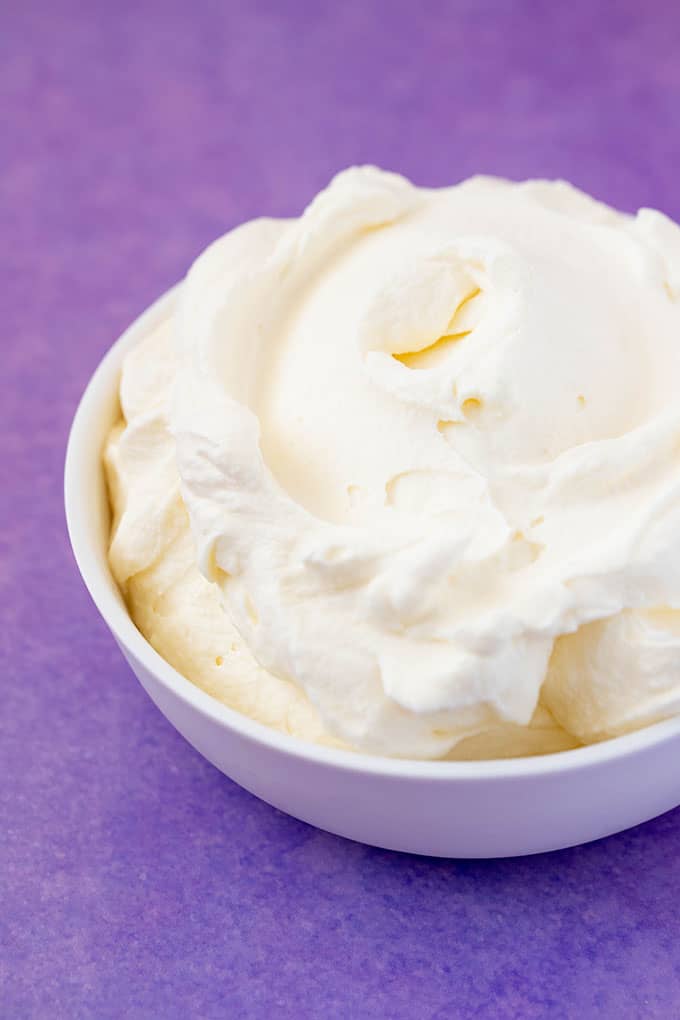
What are Stiff peaks?
If you continue to whisk your cream, it will soon become fully whipped, often referred to as stiff peaks. This is when your cream reaches the next stage and is officially ‘whipped’. It won’t move but will hold its shape and provide stability for no bake cheesecakes and pies.
Use whipped cream to:
- Fold into no bake cheesecakes
- Make Lemon Pie, Key Lime Pie or Peanut Butter Pie
- Frost Black Forest Cake
- Fill Honey Cake
HOW DO I KNOW when MY CREAM is whipped?
You’ll know your cream is ready when you can tip the bowl upside down without anything falling out.
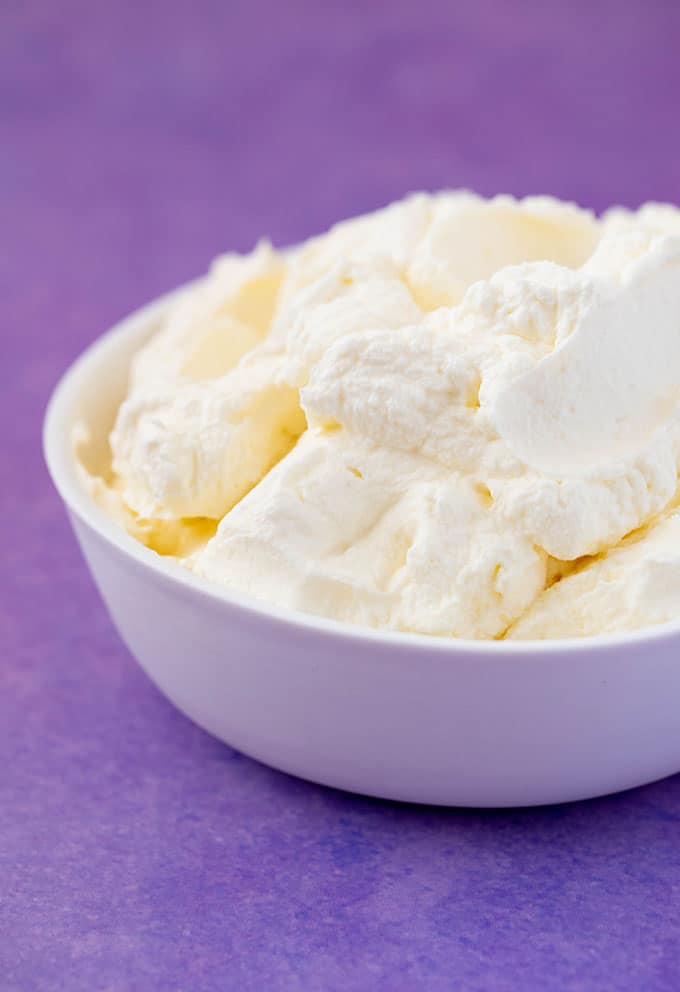
Over-whipped cream
You can very easily over whip cream which means it’ll turn grainy and look almost curdled. While it can still taste ok, it won’t have the light and fluffy texture of perfectly whipped cream.
The only way to prevent this is by watching your cream at all times as it can quickly turn from whipped to over whipped in seconds.
One trick I like to do is use an electric mixer to take your cream to soft peaks. Then carefully whisk your cream by hand for the last little bit. Using a hand whisk means you are far less likely to accidentally over mix your cream.
BAKING TIP
Always keep an eye on your cream. It will quickly turn from soft peaks to stiff peaks, and then become over whipped in seconds. Don’t look away!
Recipes that use whipped cream
Did you make this recipe? Don’t forget to rate the recipe and leave a comment below. Hungry for more? Join me on Instagram, Facebook, Pinterest and Twitter for more amazing recipe ideas.
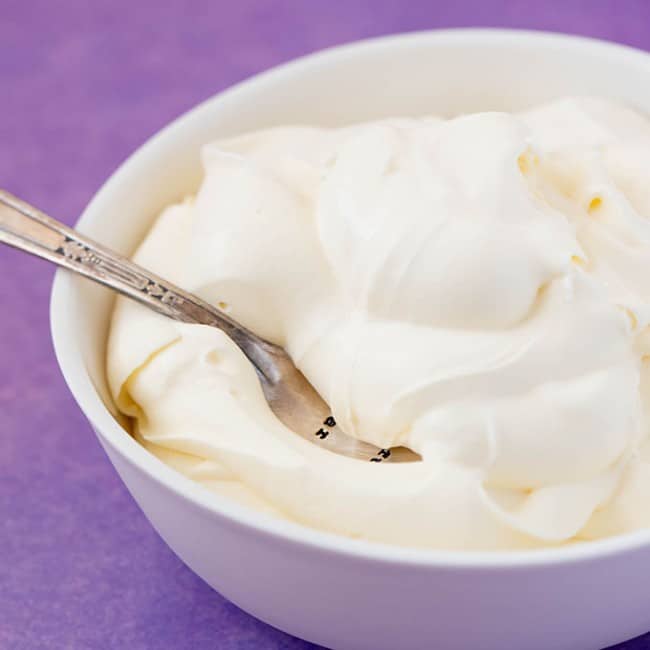
Let’s Bake
Whipped Cream
Learn how to make whipped cream by hand. You can use an electric mixer or a hand whisk – or a combination of both.
Ingredients
- 300 ml (1 and 1/4 cup) full fat thickened cream or whipping cream*
- 1 teaspoon vanilla extract or vanilla bean paste, optional
Instructions
- Start by placing your cream in a large mixing bowl. Use an electric mixer fitted with a whisk attachment (or you can use a hand whisk) and start whisking on a low speed.
- Turn the mixer up to a medium speed. Continue to mix and watch closely as the cream changes texture. Instead of going by time, look for visual clues. Your cream will slowly thicken and become smooth, creamy, and cloud-like.
- Once your cream has reached soft peaks, add a teaspoon or two of vanilla extract or vanilla bean paste, if desired. You can stop here or continue to whip your cream to stiff peaks.
- Turn your mixer back to a low speed or swap for a hand whisk. Continue to beat and watch continuously until you see the cream turn very thick and stiff. When this happens, stop immediately or you’ll over whipped your cream.
- Store cream in the fridge. Use to serve alongside classic desserts, frost cakes or cupcakes or make no bake cheesecakes.
Notes
*The type of cream you use is VERY important. Not all cream is designed to be whipped. And different types of cream are called different names in different countries. Here in Australia, whipping cream is called thickened cream. What you’ll need to look for is a cream that is at least 35% fat and it should say on the product that it is suitable for whipping. Do not use light or low fat cream.
You can follow the instructions above to make as much whipped cream as you need. Double or triple the recipe to feed a crowd.
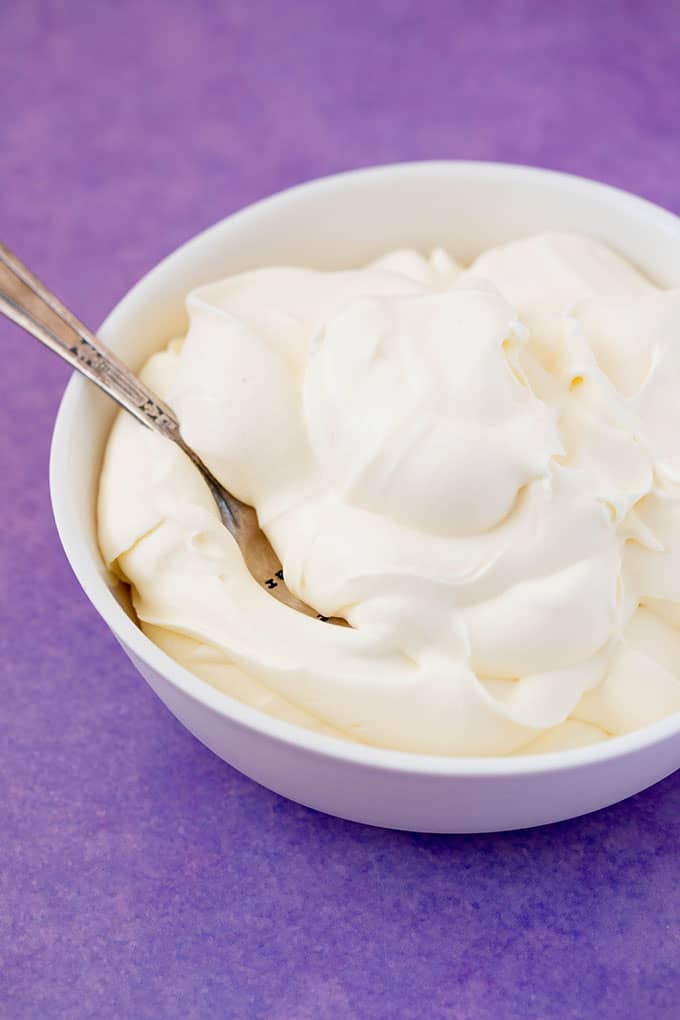
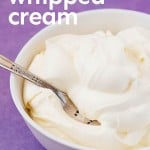
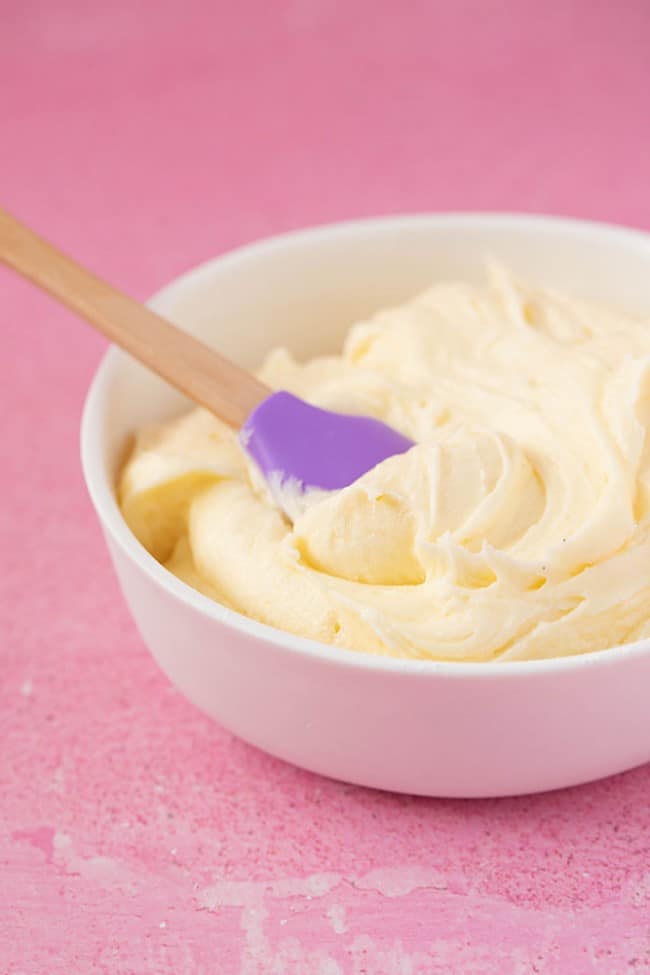
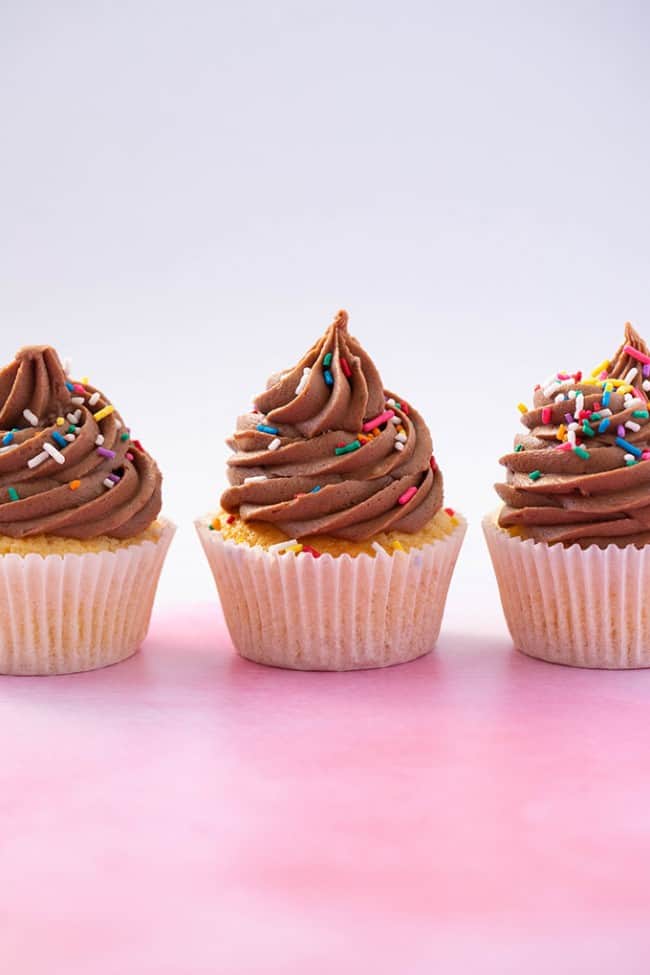
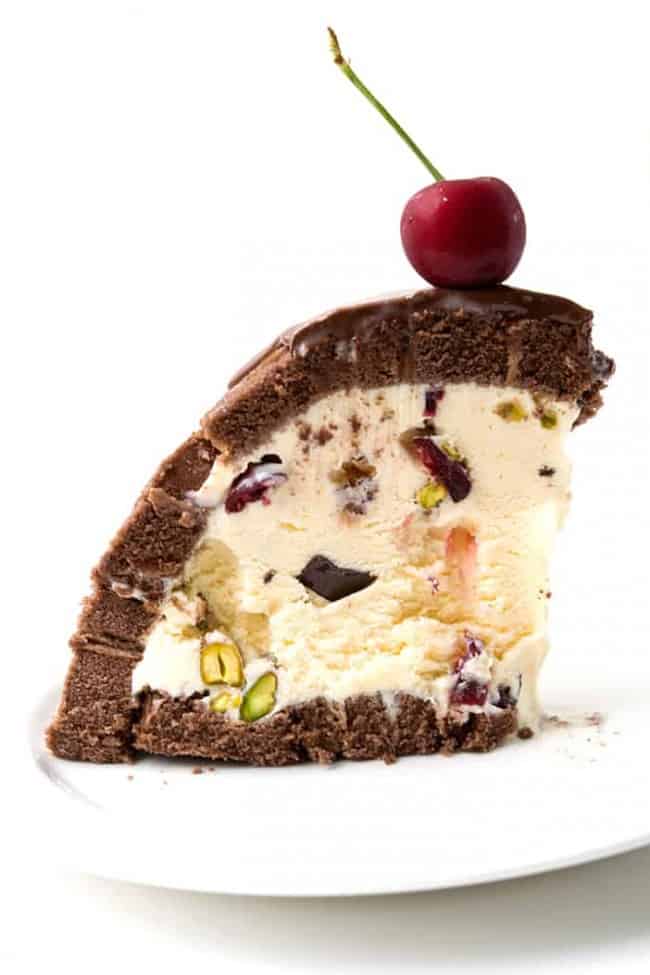
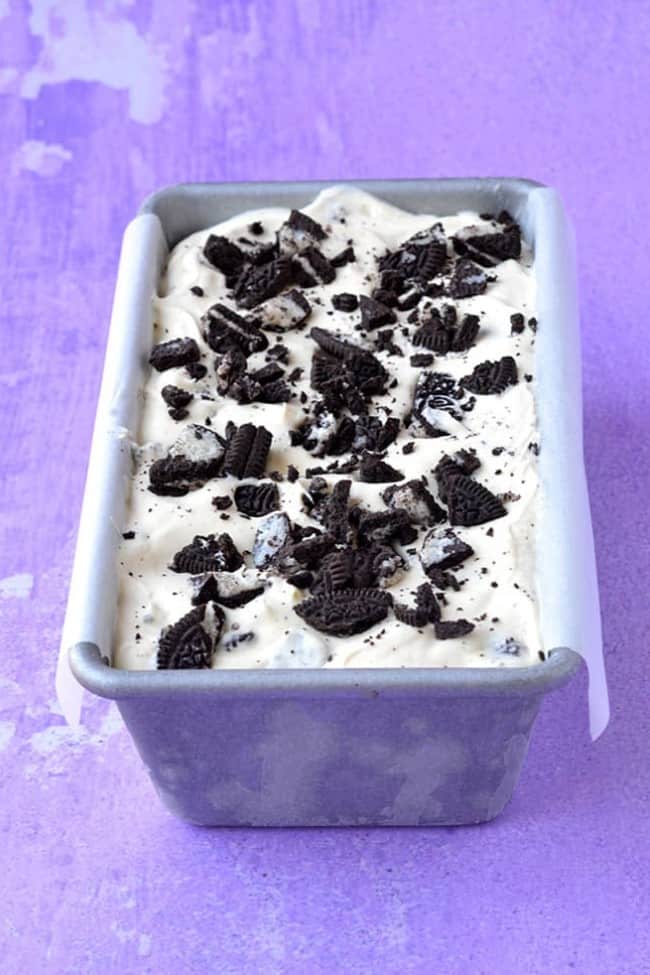
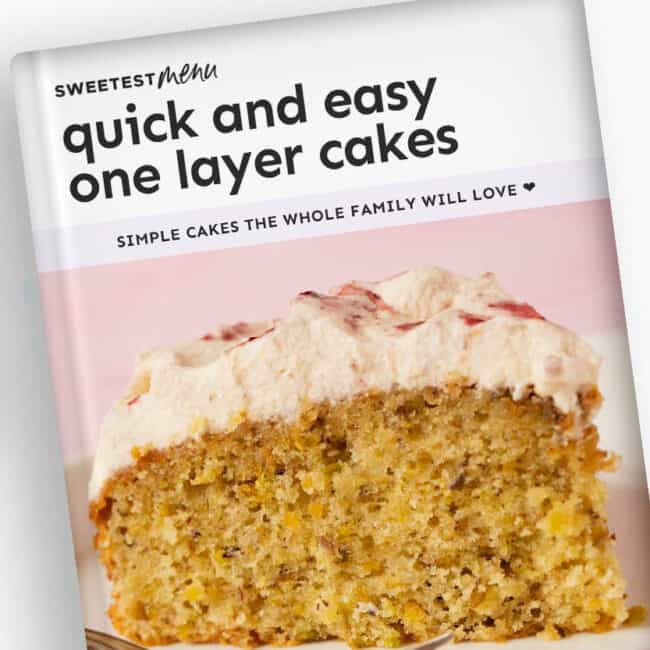
ANJI says
Very informative for a beginner like me.
Jessica Holmes says
Glad it was helpful!
Gayle Rooke says
How strange! In the U.K. you can’t really by pre whipped cream… you can buy squirty cream in a can but that’s not the same! We can buy whipping cream but that’s for this exact recipe! But to me this is just a method that I thought everyone just knew! My mind is blown!
I add some whipping cream to my cream cheese and butter frosting too!
Jessica Holmes says
Hi Gayle, I often get asked about whipping cream from readers so thought I’d sit down and write a post about it. And I agree – whipped cream in a can is just not the same!